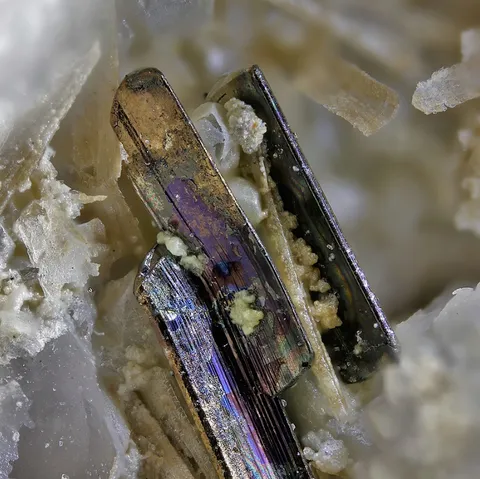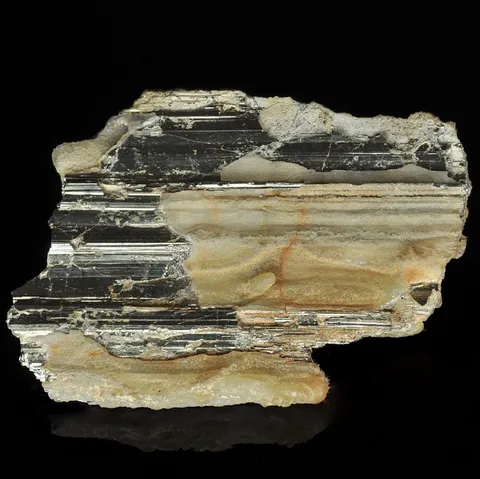CALAVERITE
Class : Sulfides and sulfosalts
Subclass : Tellurides
Crystal system : Monoclinic
Chemistry : AuTe2
Rarity : Rare
Calaverite is a rare primary telluride of epithermal gold deposits, in which it coexists with native gold, other tellurides (hessite, altaite, krennerite, etc...) as well as base metal sulfides. It owes its name to its discovery location : the Stanislaus mine in Calaveras County (California). Its crystals are rare, flattened lamellar, or short to elongated prismatic, slender according to [010]. This very fragile gold telluride has a bright metallic luster, a brass yellow to silver white color, but no cleavage. It is a very incidentalore of gold.
Main photo : Calaverite from Cresson Mine, Colorado, USA © Jason B. Smith
Calaverite in the World
Twinning
Twins are known and common on {110}, less frequent on {031} and {111}.
Fakes and treatments
No fake identified for this mineral species.
Hardness : 2.5 to 3
Density : 9.1 to 9.4
Fracture : Irregular
Streak : Greenish to yellowish gray
TP : Opaque
RI : -
Birefringence : 0
Optical character : None
Pleochroism : None
Fluorescence : None
Solubility : Nitric acid, sulfuric acid
Magnetism : None
Radioactivity : None





